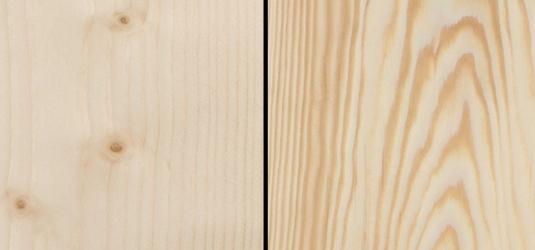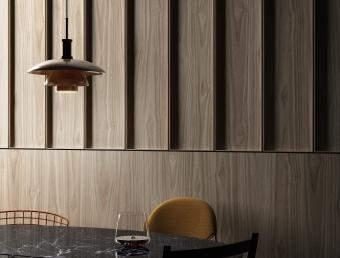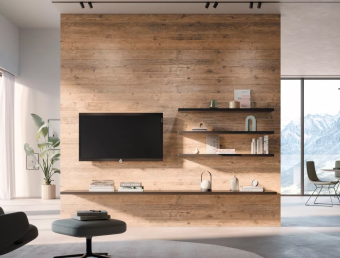
Differences between spruce and pine coniferous wood
Within the coniferous wood, spruce and pine are the best known woods in the market, but from Gabarró we want to help you to distinguish the main differences between pine and spruce wood.
Before focusing on the differences, we must be clear about the similarities of both woods. Both are soft natural woods, pale in colour, with a simplified porous structure and a high resin content. Their annual rings are marked in a pale colour and regularly uniform.
Their minor differences will be analysed in terms of their physical and mechanical properties.
Scots pine (Pinus sylvestris L)
Scots pine is a tall tree, which can reach 30/40 metres in height with a cylindrical trunk with sparse branching in the lower part, which becomes more abundant in the upper third. The sapwood is very light, pale yellow, while the heartwood is reddish, easily distinguishable from the sapwood. The knots are small to large, sound and moderately frequent jumpers, with some small resin pockets. The grain is generally very straight and the grain can be classified as medium to fine.
In terms of physical properties, the bulk density at 12% moisture content is 500 to 540 kg/m3, making it a semi-light wood. It is also considered a stable wood with a volumetric shrinkage coefficient of 0.38%.
Spruce (Picea abies Karst)
The fir is a tree of great stature, usually reaching 40 metres in height, in some cases reaching 50 metres. The trunk is straight and almost cylindrical with abundant whorled branching along the entire length of the trunk, which generates numerous small knots. Its wood is known as white wood, due to its yellowish white sapwood and the heartwood cannot be clearly differentiated, although in some cases it tends to have a certain reddish yellow tone.
The physical properties of spruce are below those of pine, making it a softer and lighter wood. Its density is 450 kg/m3. It is dimensionally stable, with a volumetric coefficient of 0.44%.
PINE AND SPRUCE APPLICATIONS
Now that we have gone deeper into the technical aspects of pine and spruce, we can see for which applications they will offer the best performance.
Pine:
- Rustic and youthful interior furniture.
- Interior and semi-exterior joinery and cladding: doors, windows, flooring, friezes.
- Interior and semi-exterior joinery.
- Laminated wood.
- Decorative veneers and plywood.
- Auxiliary construction (props, formwork).
Spruce
- Interior joinery.
- Laminated wood
- Interior carpentry for panelling, friezes; frames, pre-frames, mouldings, skirting boards.
- Decorative veneers
- Musical instruments
- Containers and packaging
Now you know the differences between the most important softwoods, but you still have more information in the Gabarró wood encyclopaedia about these and the whole range of hardwoods and softwoods that we offer.



